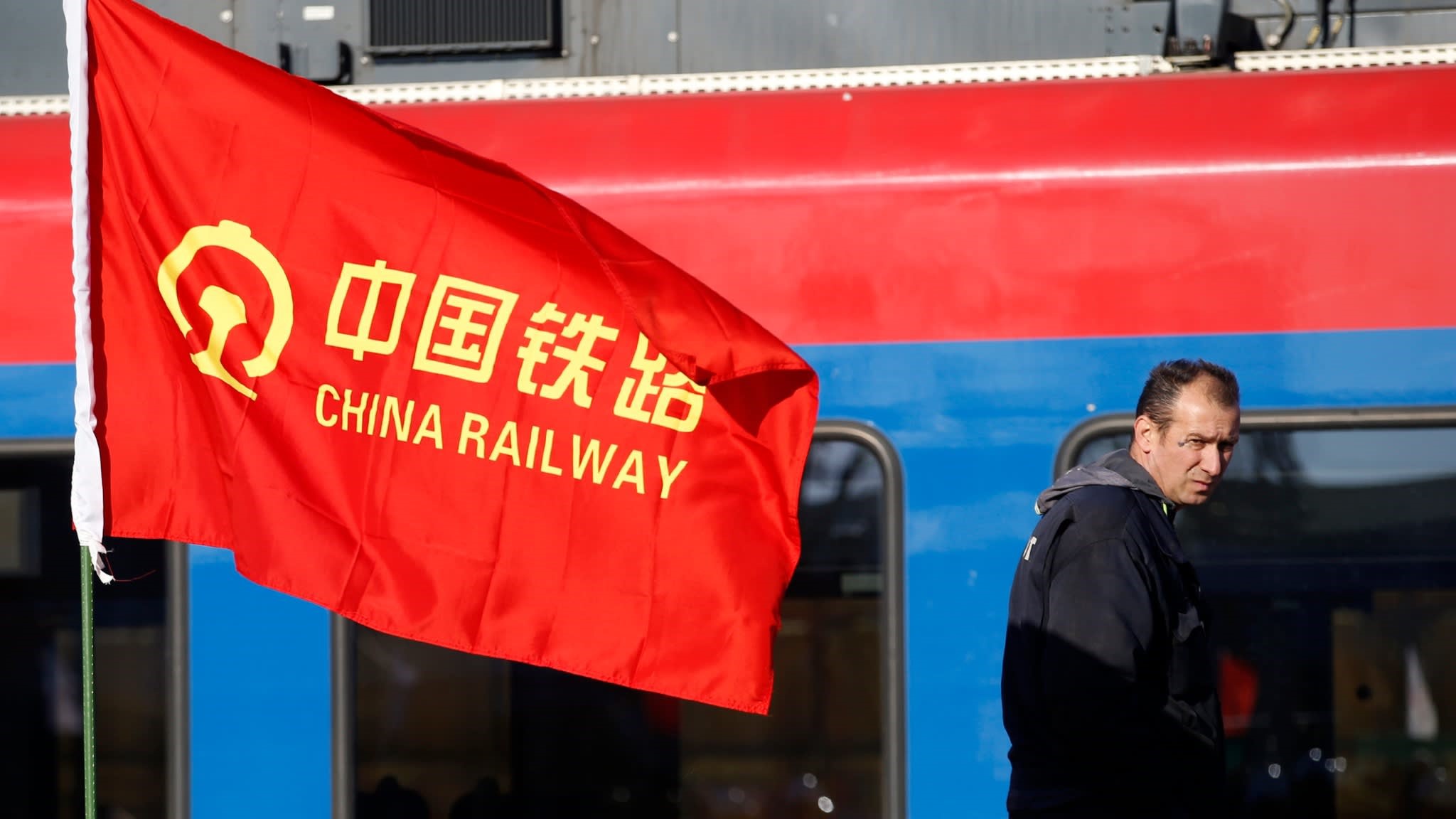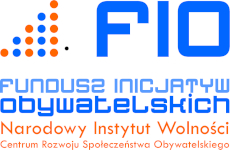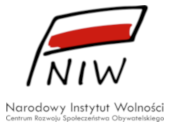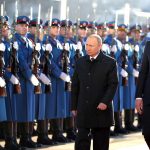SPECIAL REPORTS
Date: 19 April 2019
China’s Influence in Balkans and Central and Eastern Europe
Launched seven years ago, the sub-regional cooperation 16+1 format, aimed at boosting economic partnership between China and its partners in the Balkans and Central and Eastern Europe encounters, has yet been developing with varying degrees of success. So far, countries such as Hungary, Albania, Bosnia, and Herzegovina, North Macedonia, Montenegro, and Serbia have taken most from the project.
- Among its members are eleven EU member states (Poland, Hungary, Slovakia, the Czech Republic, Romania, Croatia Slovenia, Bulgaria, Estonia, Latvia, and Lithuania) as well as Albania, Bosnia and Herzegovina, North Macedonia, Montenegro, and Serbia. Nonetheless, their cooperation, held within the framework of the above format, proved problematic as European partners lacked a firm political vision while Beijing’s offer deemed uneasy to be adapted to European demands.
- As a result, both parties managed to tighten bilateral ties, which led to increasing China’s information advantage in the region, with particular regard to the Visegrad Group. This entails capital investments in the ownership structure of media companies, mostly in the Czech Republic, while fulfilling a pro-Chinese narrative in the mass media, nurtured by a group of politicians and experts, also from the Budapest-based China–CEE Institute think tank.
 SOURCE: ME.CHINESEEMBASSY.ORG
SOURCE: ME.CHINESEEMBASSY.ORG
16 + 1
When setting up the 16+1 initiative, the People’s Republic of China strove to achieve a set of political and economic goals. First, the authorities in Beijing attempted to gain partners who could be powerful enough to lobby for China’s European interests while improving its image worldwide. Secondly, China sought to get a competitive advantage and enter the EU market through the back door, which first and foremost corroborated plans for China’s expansion in accordance with the development of the domestic economy. Chinese ventures have clustered in a few key industries, including infrastructure, energy, and modern technologies. The problem, however, is a model of cooperation China offers to its European peers as it is primarily based on Chinese-funded loans. Such move, however, may possibly make local entities highly reliant on Chinese-owned capital inflow.
Moreover, Beijing’s financial aid involves the participation of domestic firms, tasked with implementing subsequent investments. The problem is the transparency of Beijing’s investment offer and China’s attempts to favor national enterprises that are yet becoming more and more numerous. This stands in stark contrast to the general EU rules and principles of transparency and open procurement. EU requirements interfere with granting government guarantees, required by Beijing to implement further projects and showing favoritism to own companies while hoping to acquire Chinese loans to promote investments. As for EU countries, public assistance is involved, triggering legal consequences as it needs to obtain approval from the European Commission. For their part, non-European states are at risk of increasing national debt. Despite all that, China’s investment offer may seem attractive as it sets no preconditions and does not imply any reliance on structural reforms or establishing the IPA 2014–2020 (“IPA II”) legal framework. As a result, Chinese-funded infrastructure projects have emerged, including coal-fuelled power plants in Serbia and Bosnia and Herzegovina[1] as well as highways in Montenegro, North Macedonia, and Albania. Also, China has committed to granting a loan which will cover 85 percent of the costs of upgrading the section of the $2.9 billion railway line to link Belgrade with Subotica, expected to become a part of the 350-kilometer-long railway connection running to Budapest. Although the 150-kilometer Hungarian section is planned to be ready by 2023, the European Commission launched an investigation into the case regarding EU procurement and transparency rules.
Regardless of whether it is addressed to EU countries or their non-EU peers, a shortcoming in China’s investment concept is its scarce impact on the local economy, a phenomenon linked to withdrawing money abroad to subsidize Chinese-sourced materials, services and subcontractors.
 Prime Minister Viktor Orbán with Huawei executives. SOURCE: MINISZTERELNOK.HU
Prime Minister Viktor Orbán with Huawei executives. SOURCE: MINISZTERELNOK.HUHungarian leader
Of all countries of the 16+1 sub-regional cooperation format, Hungary emerged as its greatest beneficiary. Chinese tech giant Huawei, which employs 2,500 local people in its large logistic center near Pecs, has won the tender for administering the emergency helpline number 112 in Hungary. The firm claimed to meet two-thirds of Hungary’s total demand for mobile telephony equipment. Another Chinese manufacturer ZTE offers Internet services and plans to provide a full 5G service. Facing China’s 5G cutting-edge technologies, all countries, except for Hungary, have raised concerns over information security, though. In addition, China intends to build a €140 million geothermal power plant in Tura of a total capacity estimated to reach 40 MW. This is one of only a few examples of greenfield investments being capable of creating new jobs. Generally, Beijing holds great interest in carrying out mergers and acquisitions of such companies as BorsodChem, the largest chemical company in Kazincbarcika, Hungary. Strong Sino-Hungarian bilateral ties are fostered by Budapest’s political will. Not incidentally, Hungary is home to the largest Chinese diaspora in Central and Eastern Europe. Furthermore, the Chinese-Hungarian cooperation so far has produced tangible results for firms of the latter country as they have managed to overcome phytosanitary barriers to trade on the Chinese market and signed an agreement regarding renminbi financial settlements, with securities being involved.
An official study has shown that three-quarters of China’s exports and two-thirds of imports focus exclusively on the Visegrad countries. Compared to the Baltic States as well as Romania and Bulgaria, China’s shares do not exceed 10 and 15 percent respectively.
Of all V4 member states, Hungary is most committed to developing its ties with China, both due to the numerous Chinese diaspora and Budapest’s political will to tighten partnership with Beijing. Slovakia has, in turn, its own strategy for boosting economic cooperation while the Czech economy is characterized by a relatively high level of technological development, as exemplified by 22 projects that got a green light to be soon implemented[2]. Compared to other European countries, Poland ranks 15th in terms of export volumes to China[3].
Belt and Road
The 16+1 sub-regional format was believed to pave the way for setting up the Belt and Road initiative, Beijing’s giant infrastructure project. Earlier referred to as the New Silk Road, the venture is devised to aid China to build its position as a world’s superpower. China’s cooperation model with the Balkans and Central and Eastern Europe relies upon carrying out expansive policy and granting loans, both of which could facilitate the implementation of China’s Belt and Road game-changing undertaking. Seven years before, the concept had provoked moderate enthusiasm from countries of the region, yet it is now said to have failed to bring overwhelming success. Notwithstanding that, the situation has ameliorated, as exemplified by the plans to resume joint Bulgarian-Chinese efforts to build the Belene nuclear power plant and to launch an 11,500-kilometer-long freight railway connection, linking Budapest and the eastern China port city of Xiamen[4]. To intensify the project implementation, it is yet vital for the Chinese policy to reorient its current course, abandoning its hitherto position of a lender and contractor while becoming a credible investor. Furthermore, Beijing should adapt its investment offer to European and their partners’ domestic legislation.
 A worker walks on the site of the reconstruction of a railway line between Budapest and Belgrade. SOURCE: THEDIPLOMAT.COM
A worker walks on the site of the reconstruction of a railway line between Budapest and Belgrade. SOURCE: THEDIPLOMAT.COMContrary to China’s expectations, 16+1 countries did not opt for promoting Beijing’s interest in exchange for en bloc cooperation. Earlier, Hungary and Greece showed their solidarity with China in the international arena. Also, Beijing can count on support from Serbia as the latter might seek China’s plans to finance the highway project under the 16+1 framework as an alternative to economic cooperation with Russia. And yet, given a long tradition of Russian-Serbian mutual ties, China may find it unlikely to put an end to the Kremlin’s influence on Serbian soil.
China’s Belt and Road Initiative, along with the 16+1 multilateral platform initiative, was also intended to build Beijing’s global image of a contemporary superpower that aspires to develop a peaceful international partnership. For instance, this has taken on an institutionalized form, as evidenced by activities of Asia Development Bank, associations and foundations (Poland-based SINOPOL) or bilateral chambers of commerce, including Slovakia’s SINACO. In Hungary, China has set up the China-CEE Institute, the first initiative of that kind to be established in this part of Europe[5].
Chinese culture and media as soft power
In addition to the above-mentioned economic cooperation, the People’s Republic of China has increasingly invested in soft power tools to exert an impact on its European peers. Also, China’s idea to export domestic culture, referred by Beijing to as both ancient and apolitical while used as a soft power tool, no longer bears fruits, though foreign societies seem increasingly interested in Asian cultures. Beijing needed to face an image crisis after activities conducted by the state-run Confucius Institutes (CI) had become widely questioned as being merely a platform for exchanging international cultural relations[6].
Unlike the United States, China’s cultural expansion in Central and Eastern Europe is by no means limited to the above Confucius Institutes[7]; in addition to exerting influence through promoting Mandarin culture and language, Beijing has recently intensified its persuasive and political influence, the latter of which applies particularly to left-wing politicians[8]. China’s persuasive attempts are best illustrated by its endeavors to acquire stakes in Czech and Slovak media[9] concerns. Beijing’s successful investments in local firms will pave Chinese co-owners’ way of selecting media reports or omitting uncomfortable political issues while reiterating China’s point of view.
As shown by both quantitive and qualitative analyses of social and traditional media, held within the[10] ChinflueCE initiative, the media discourse in the Czech Republic and Hungary, or countries whose top officials have close political ties with China, depicts the Middle Kingdom in a highly stereotyped and politicized manner. Speaking of the Czech Republic, this tendency seems most evident in domestic social media[11]. In Hungary, a positive narrative is disseminated by pro-government Central European Press and Media Foundation[12] yet–like in Slovakia–the discourse is dominated by the issue of economic cooperation. As for Poland, Latvia, Slovenia, Croatia, and Bulgaria, Chinese-related topics are essentially referred to by their domestic media in the context of ongoing investments. For their part, Macedonian and Albanian media reports are by no means determined by human rights issues and other political matters deemed by Beijing as uncomfortable.
According to analysts from Network of Democracy Research Institutes, China’s persuasive influence takes the form of “sharp power,” which can neither be referred to as “hard“ nor “soft” power, because of its intention to manipulate both the information environment and the political sphere to gain political and informational advantage[13]. Instead, China exerts influence through its Confucius Institutes, tasked with upholding Beijing’s positive image worldwide, mostly by holding scholarship exchange for students and enabling easier access to Chinese culture. Also, China carries out a number of online activities, both institutionalized and spontaneous, with the latter[14] taking place mostly in numerous discussion groups on Chinese culture and tourism.
On the one hand, implementing the pro-China media narrative permits regional media companies to enter the ownership structure, as illustrated by attempts made by the Czech Republic to enter the Slovak market, and arouse sympathy among key political actors, thus gaining a decisive voice in the country’s decision-making processes. Such a tendency has been observed in the Visegrad Group countries and is linked to common prospects for economic cooperation. This, in turn, translates into spreading media reports discussing the benefits of Chinese investments, either potential or already implemented, which, however, means that human rights issues are not at all publicized. This is conducive to establishing think tanks tasked with disseminating China’s point of view through a network of so-called independent experts, which makes published content much more credible[15].
China’s persuasive influence is, however, not pursued through traditional information warfare methods, which excludes the mass disinformation misuse. Counteracting Beijing’s persuasive policy in the media imposes the necessity to protect the information space in both social and technological dimensions. The former case involves media education, which in fact provides for establishing an information consumption culture. Among key instruments for achieving this goal are fact-checking and support for the mass media development. The main point is to boost journalists’ skills, providing them a set of tools for reliable fact checking and the professional use of information sources.
Beijing, apart from setting up its positive media image as part of the 16+1 sub-regional cooperation format, also strives to secure a number of competitive advantages, mainly by accessing information of crucial importance for China’s economic interests. The problem is now to ensure information security and protect information resources to an adequate extent. For its part, the level of information security directly affects the state’s decision-making process, shaped by the information culture, defined as a way of accessing the global information network by society.
Central and Eastern European countries need now to face a challenge of outlining a single political vision to include both their present-day cooperation with China and reducing Beijing’s persuasive influence. Without a similar concept, the “divide and rule” strategy imposed by the Sino-European partnership may soon empower China’s strategic position.
[1] The cost of an investment in Serbia is estimated at over $1.1 billion. In Serbia, China participates in modernizing the Pan-European Corridor X running between Salzburg and Thessaloniki through the Balkans.
[2] https://www.hrad.cz/file/edee/2017/05/projekty_schvalene.pdf [accessed: March 21, 2018].
[3] see Adéla Denková, Edit Zgut, Karolina Zbytniewska, Lukáš Hendrych, Marián Koreň: Chiny i Grupa Wyszehradzka: Współpraca w ramach 16+1, czyli wiele hałasu o nic [The 16+1 regional cooperation: much ado about nothing], https://www.euractiv.pl/section/grupa-wyszehradzka/special_report/chiny-i-grupa-wyszehradzka-161-wiele-halasu-o-nic/ [accessed: March 21, 2018].
[4] Trains cover the route in 18 days. In the future, the route may become part of a Belgrade-Budapest high-speed railway, ensuring a shipping road from the Greek port of Piraeus, partially owned by China.
[5] https://china-cee.eu
[6] The Office of Chinese Language Council International, also known as Hanban, is affiliated with the Chinese Ministry of Education. It is committed to creating a global network for teaching Chinese language and culture, fundamental to its “great pursuit of national rejuvenation.” Over 1,500 Confucius Institute educational facilities in 140 countries were involved in implementing these goals, with a total of 1.4 million people participating in their courses. Read more on the Chinese influence: D. TORRES: China’s soft power offensive, December 26, 2017, https://www.politico.eu/article/china-soft- power-offensive-confucius-institute-education/ [accessed: November 28, 2018]. Read more about Beijing’s grand project of the Chinese nation, interpreted as redefining China’s international position, in a publication by Dmitry V. Kuznetsov: D. KUZNETSOV: The Chinese Nationalism and Foreign Policy Component in Mass Consciousness in China, in: Overcoming controversies in East Asia, ed. T. KAMIŃSKI, Łódź 2017, p. 29.
[7] The U.S. Department of Defense is prohibited from funding any of more than a hundred Confucius Institute programs at U.S. universities. Employed within their structures, Chinese instructors are yet subject to the Chinese legal regulations, including to freedom of speech restrictions, as a result of which U.S. students acquire a censored version of facts regarding such issues as human rights observance in China. Read more in the National Association of Scholars report – https://nas.org/images/documents/confucius_institutes/NAS_confuciusInstitutes_executiveSummary.pdf [accessed: April 3, 2019].
[8] In Slovakia, both the non-parliamentary Communist Party of Slovakia as well as some politicians of the ruling SMER-SD Party represent a pro-Chinese position. For his part, Czech President Miloš Zeman remains a proponent of Sino-Czech bilateral ties given that he appointed a Chinese businessman his advisor.
[9] It referred to China’s endeavors to acquire stakes in a media corporation that has in its portfolio one of the Czech most popular broadcasters Nova TV or 30 percent of shares in Médea Group and 49 percent in Empresa Media, both of which own a Czech weekly Týden. After it was taken over by a Chinese company, it, however, ceased to publish any articles on human rights protection, considered sensitive for Beijing. Earlier, CEFC China Energy made an attempt to acquire Slovakia’s main private broadcaster TV Markiza and a block of stakes in Penta, a Slovak financial holding company, that has in its portfolio both a web portal and a few major nationwide press titles. China’s successful attempts to take over Slovakia’s media outlets might have led to faltering the pluralistic media discourse.
[10] An international analytical project developed by the Association for International Affairs (AMO) in participation with the Institute of Asian Studies and Central and Eastern European Center for Asian Studies, with the support of the National Endowment for Democracy (NED); See more: http://www.chinfluence.eu/about/
[11] Lucie Franková, China’s Activities in 16+1: Pooling Knowledge and Sharing Lessons Learnt, http://www.chinfluence.eu/when-investments-are-not-in-stachinas-activities-in-161-pooling-knowledge-and-sharing-lessons-learntte-interest/ [accessed: March 21, 2019].
[12] Hungary’s Közép-Európai Sajtó és Média Alapítvány (Central European Press and Media Foundation, CEPMF) brings together 476 media outlets, including the press, radio, TV, and Internet, whose overall value is estimated between €62 and 77 million.
[13] Juan Pablo Cardenal, Jacek Kucharczyk, Grigorij Mesežnikov, Gabriela Pleschová: Sharp power. Rising Authoritarian Influence, https://www.ned.org/wp-content/uploads/2017/12/Sharp-Power-Rising-Authoritarian-Influence-Full-Report.pdf [accessed: March 21, 2019].
[14] The Sino-Polish Foundation for Economic and Cultural Exchange (SINOPOL) published a Polish-language quarterly devoted to promoting Chinese culture and tourism. The magazine is developed in partnership with China Radio International, or part of the Voice of China media holding, tasked with propagating China’s point of view worldwide. China Radio International broadcasts in 65 languages, including Polish and other state languages of member countries of the 16+1 sub-regional cooperation format.
[15] Under one of the Chinese propaganda narrative schemes, disseminated by “independent experts”, a definition of democracy and attitude to human rights protection differ from a European approach.
The publication of the Special Report was co-financed from the funds of the Civic Initiatives Fund Program 2018.
Selected activities of our institution are supported in cooperation with The National Freedom Institute – Centre for Civil Society Development.
All texts published by the Warsaw Institute Foundation may be disseminated on the condition that their origin is credited. Images may not be used without permission.
















